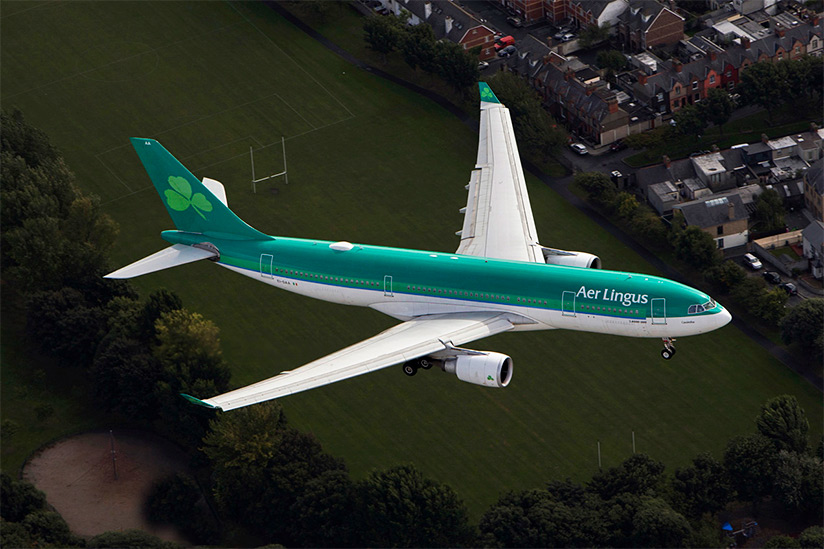
A small widget fails deep in the core of a complex mechanism flying through the skies. A chain of events follows, ending with a crew of professional pilots and cabin crewmembers safely returning their passengers and aircraft to the ground. Everyone goes home satisfied with a job well done.
The investigators go to work, piecing together all the clues to find out what happened, to learn what they can and to hopefully make sure it doesn’t happen again. A critical part of that learning process is the narrative report provided by the crew. Being able to match up the available evidence — whether parts or residue, flight data, radar traces, recordings or any other type of information — allows the investigator to see a full picture of what took place and to understand the role of the crew in managing the events as they unfolded.
In most cases and in many parts of the world, that’s the end of the story. Those pilots, that investigator, perhaps the airline, will have learned a valuable lesson, gained some hard-earned experience, and in all likelihood, will never encounter an event of that sort again. If they do, they will know what to do to reduce the risk of a bad outcome.
Meanwhile, far away across the world, the same widget works its way loose on a similar aircraft. This time the crewmembers don’t notice. The subtle warning signs go unheeded because the crew are busy managing their workload. Only when they attempt a critical maneuver do they suddenly find the aircraft is not so easy to handle. They have their hands full. The weather is marginal, the diversion options limited. Will they land safely?
Imagine you are that second pilot. Wouldn’t you like to know how the other crew managed, what they spotted that allowed them to identify the problem? How much easier would your task be if you were armed with that knowledge?
Every day across the world, pilots and other aviation professionals voluntarily submit safety reports, pointing out errors, hazards and actual occurrences. Most often, they do this either because it’s mandated by regulation or because their company has created an atmosphere of trust where they are encouraged to talk openly about safety threats. But have you ever wondered what happens to your safety report after it has been processed, dissected, analyzed and shared among your colleagues in your airline?
Every single safety report (and cabin, ground and maintenance report) is a vital component in a global system of data sharing. If you consider that every individual report represents one piece of a jigsaw, then only when we bring all the pieces together can we hope to be able to see the big picture. Showing that picture to each and every pilot, engineer, cabin crewmember and ground service agent is our ultimate goal, because when all of us are aware of the threats that await us out on the line, together we are best equipped to manage the risks.
The two most common things said to me by staff and management, respectively, are “you must be kept busy in the safety office” and “what does everyone else do?” These two comments actually go to the heart of what every safety office does, and are key to how effective we are at managing risk. If you wonder what keeps us busy in the safety office, well, for the most part, it is processing the ever-increasing volume of safety reports being submitted and doing our best to ensure the lessons learned are properly shared with the business. But we don’t stop there. We also constantly look at what we are doing, and compare the operational events to what we planned to have happen when we originally assessed the risk of the activity. In this way, we strive to continuously improve our systems and gradually reduce the overall risk incrementally.
But think again about the tale above. Unless we find ways to share our own learning with the wider community, and to hear about what goes on beyond our own horizons, then we will collectively struggle to improve our global system. We are being told that traffic is forecast to multiply in coming decades, and without effecting another step change in safety margins, our current ultra-low fatal accident rates will quickly seem intolerable as the sheer volume of traffic may result in frequent accidents. Few, if any, of those accidents will be new sorts of accidents, just new versions of old ones, and somewhere, someone will be saying “I knew that was going to happen” or worse still “everyone knew it was going to happen.”
So what keeps my team and me busy is constantly striving to engage effectively with our global safety teammates and creating networks, relationships and trusting friendships that allow us to confidently share our experiences, learn from each other’s mistakes and pose challenges to common wisdom that might just reveal the unknown unknowns.
In many parts of the world, the data gathering process is still in its infancy. Little or no sharing takes place, and sadly, hard-won lessons are sometimes not shared in time to prevent loss of life in other regions. Many accidents nowadays are preventable, especially if the crew are forearmed with the knowledge of those who went before them.
All across the globe, efforts are under way to better organize the industry’s sharing of safety data. The ultimate objective is to ensure that hard-learned lessons are shared in a timely and effective manner with front line operators everywhere. Many obstacles stand in the way of this endeavor. Data protection concerns are, of course, very real, especially in the minds of the reporters who need reassurance that their reports will never come back to haunt them, either through punitive action by state officials or indiscriminate leaks to the news media. Furthermore, everyone involved is acutely aware of the need to protect safety data from inappropriate use in civil or criminal litigation.
Among the groups leading the drive toward a robust system for safety data collection, processing, sharing and protection is Flight Safety Foundation. The Foundation’s Global Safety Information Project aims to research and document the many different ways of collecting data across the regions, to produce recommendations on what best practice should look like, and then to provide these recommendations to international bodies such as the International Civil Aviation Organization, the U.S. Federal Aviation Administration, the European Aviation Safety Agency and other regional agencies. The Foundations’ Legal Advisory Committee is made up of aviation lawyers from around the world whose objective is to establish a set of guidance materials to educate and inform operators and regulators so that appropriate local understandings can be put in place to protect safety data from misuse in legal proceedings.
Aer Lingus actively supports the Foundation in its work, and also the work of other industry safety groups like the International Air Transport Association and the U.K. Flight Safety Committee, and we also work closely with the Airbus Flight Safety team. Being part of this global safety team helps us to recognize our limitations, leverage our connections and build better resilience into our operation.
I encourage everyone involved in aviation safety management to reach out to your neighbors, your competitors and your suppliers, and to look beyond rivalries and realize that we all have a responsibility to be global safety citizens. Working together, we can deliver sustainable improvements in our wonderful industry.
 Capt. Conor Nolan is an Aer Lingus pilot and the airline’s corporate safety and resilience manager. He also is on Flight Safety Foundation’s Board of Governors and serves as the Foundation’s treasurer. The views expressed are the author’s and not necessarily those of the Foundation. Aer Lingus is the host sponsor of the Foundation’s 70th annual International Air Safety Summit, Oct. 23–25, in Dublin.
Capt. Conor Nolan is an Aer Lingus pilot and the airline’s corporate safety and resilience manager. He also is on Flight Safety Foundation’s Board of Governors and serves as the Foundation’s treasurer. The views expressed are the author’s and not necessarily those of the Foundation. Aer Lingus is the host sponsor of the Foundation’s 70th annual International Air Safety Summit, Oct. 23–25, in Dublin.


